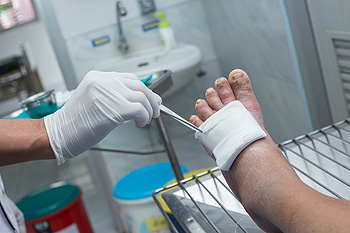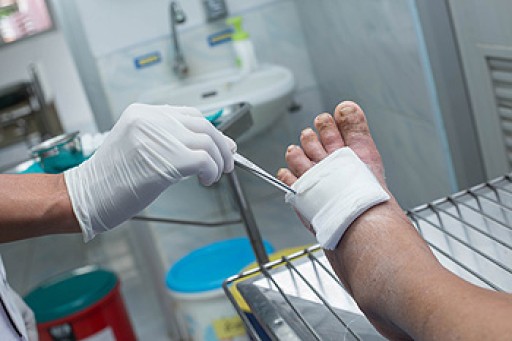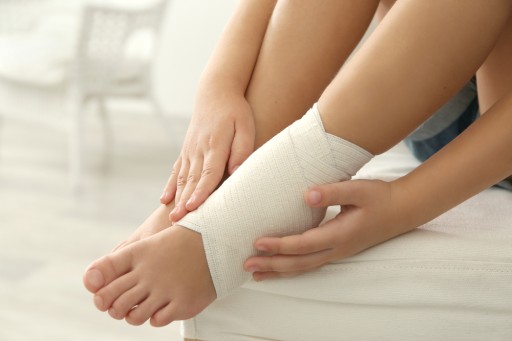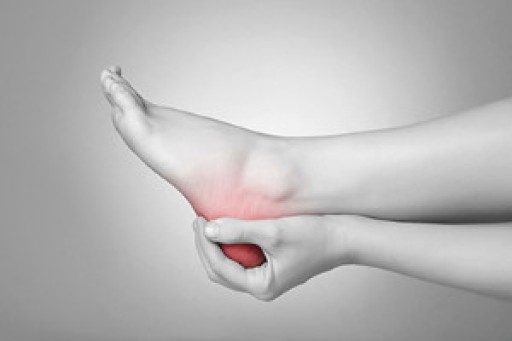 Roughly 15% of people with diabetes develop wounds or diabetic ulcers on their feet. These open lesions can be caused or exacerbated by foot trauma, pressure on the foot, vascular disease, poor circulation, or the inability to feel pain in the foot. Certain ethnic groups, older men, and those who take insulin or have had diabetes over an extended period of time are said to have higher risks of developing a foot ulcer. These ulcers are serious conditions and should be treated promptly by a professional. A podiatrist can both diagnose diabetic foot ulcers and devise a prevention and treatment plan to avoid infection, hospitalization, or even amputation.
Roughly 15% of people with diabetes develop wounds or diabetic ulcers on their feet. These open lesions can be caused or exacerbated by foot trauma, pressure on the foot, vascular disease, poor circulation, or the inability to feel pain in the foot. Certain ethnic groups, older men, and those who take insulin or have had diabetes over an extended period of time are said to have higher risks of developing a foot ulcer. These ulcers are serious conditions and should be treated promptly by a professional. A podiatrist can both diagnose diabetic foot ulcers and devise a prevention and treatment plan to avoid infection, hospitalization, or even amputation.
Diabetic foot care is important in preventing foot ailments such as ulcers. If you are suffering from diabetes or have any other concerns about your feet, contact one of our podiatrists from Foot Health Center of Merrimack Valley. Our doctors can provide the care you need to keep you pain-free and on your feet.
Diabetic Foot Care
Diabetes affects millions of people every year. The condition can damage blood vessels in many parts of the body, especially the feet. Because of this, taking care of your feet is essential if you have diabetes, and having a podiatrist help monitor your foot health is highly recommended.
The Importance of Caring for Your Feet
- Routinely inspect your feet for bruises or sores.
- Wear socks that fit your feet comfortably.
- Wear comfortable shoes that provide adequate support.
Patients with diabetes should have their doctor monitor their blood levels, as blood sugar levels play such a huge role in diabetic care. Monitoring these levels on a regular basis is highly advised.
It is always best to inform your healthcare professional of any concerns you may have regarding your feet, especially for diabetic patients. Early treatment and routine foot examinations are keys to maintaining proper health, especially because severe complications can arise if proper treatment is not applied.
If you have any questions please feel free to contact one of our offices located in North Andover, and Tewksbury, MA . We offer the newest diagnostic and treatment technologies for all your foot and ankle needs.











 Heel pain
Heel pain




